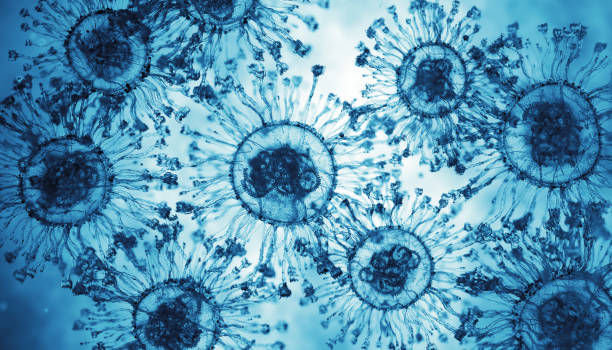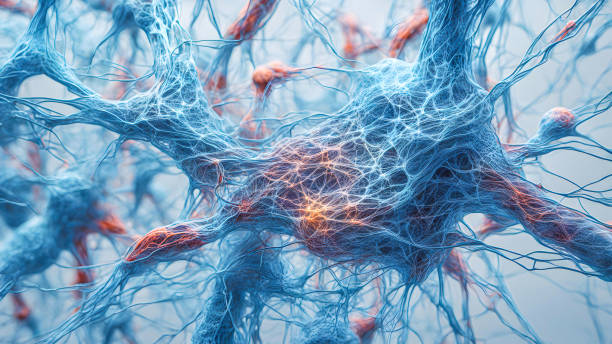Exploring the Frontiers of Neurological Disorders
Exploring the Frontiers of Neurological Disorders

Neurological disorders represent a broad spectrum of conditions that affect the nervous system, including the brain, spinal cord, and peripheral nerves. These disorders can have a profound impact on the lives of those affected, influencing their ability to move, speak, breathe, and even think. This comprehensive article delves into the complexities of neurological disorders, exploring their types, causes, symptoms, diagnosis, treatments, and ongoing research that aims to improve the lives of those affected.
neurological disorders definition
neurological disorders encompass a wide array of conditions that affect the brain, spinal cord, and peripheral nerves, which together make up the central and peripheral nervous systems.

What are Neurological Disorders?
These disorders can manifest in various forms, ranging from congenital anomalies and degenerative diseases to trauma-induced conditions and infections affecting the nervous system. Symptoms can be as diverse as the disorders themselves, including but not limited to, cognitive impairments, sensory disturbances, seizures, muscle weakness, and coordination problems. The impact of these disorders extends beyond the individual, affecting families and communities, and posing significant healthcare challenges. Despite the complexity of neurological disorders, ongoing research and advances in medical science continue to enhance our understanding and treatment of these conditions, offering hope for improved management and quality of life for affected individuals.
Types of Neurological Disorders
Here’s a detailed look at some major types of neurological disorders:
-
Cerebrovascular Diseases:
-
- Stroke: Occurs when blood flow to a part of the brain is interrupted or reduced, leading to brain cell death.
- Transient Ischemic Attack (TIA): Often called a mini-stroke, a TIA is a temporary blockage of blood flow to the brain, serving as a warning sign for future strokes.
-
Neurodegenerative Diseases:
-
- Alzheimer’s Disease: A progressive disorder that deteriorates memory and cognitive functions. It’s marked by the accumulation of amyloid plaques and tau tangles in the brain.
- Parkinson’s Disease: Characterized by tremors, stiffness, and bradykinesia, Parkinson’s is associated with the loss of dopamine-producing neurons in the brain.
-
Demyelinating Diseases:
-
- Multiple Sclerosis (MS): A disease where the immune system attacks the protective sheath (myelin) that covers nerve fibers, causing communication problems between the brain and the rest of the body.
-
Epilepsy and Seizure Disorders:
-
- Epilepsy: Characterized by recurrent, unprovoked seizures due to abnormal brain activity. It can have various underlying causes, from genetic predispositions to brain injuries.
-
Infectious Diseases:
-
- Meningitis: Inflammation of the membranes (meninges) surrounding the brain and spinal cord, usually caused by an infection.
- Encephalitis: An inflammation of the brain itself, often due to viral infections, that can lead to headaches, fever, confusion, and seizures.
-
Traumatic Disorders:
-
- Traumatic Brain Injury (TBI): Damage to the brain caused by an external force, which can result in a wide range of functional short- or long-term changes affecting thinking, sensation, language, or emotion.
- Spinal Cord Injury: Damage to any part of the spinal cord or nerves at the end of the spinal canal, often causing permanent changes in strength, sensation, and other body functions below the site of the injury.
-
Functional Disorders:
-
- Migraine: A neurological condition characterized by intense, debilitating headaches, often accompanied by nausea, vomiting, and sensitivity to light and sound.
- Fibromyalgia: Although primarily considered a rheumatological condition, fibromyalgia has significant neurological components, characterized by widespread musculoskeletal pain accompanied by fatigue, sleep, memory, and mood issues.
-
Neuromuscular Disorders:
-
- Amyotrophic Lateral Sclerosis (ALS): Also known as Lou Gehrig’s disease, ALS affects nerve cells in the brain and spinal cord, causing loss of muscle control.
- Myasthenia Gravis: An autoimmune disorder that results in muscle weakness due to the impairment of communication between nerves and muscles.
Understanding these disorders involves recognizing the complex interplay between the brain, spinal cord, and peripheral nerves. Continued research is essential for developing more effective treatments and, ultimately, cures for these challenging conditions.
neurological disorders symptoms
The symptoms of neurological disorders vary widely depending on the specific condition and the part of the nervous system affected. However, some common symptoms that may indicate a neurological problem include:
- Cognitive Impairments: Memory loss, confusion, and difficulty concentrating or making decisions.
- Motor Symptoms: Muscle weakness, tremors, unexplained pain, decreased sensation, and coordination problems.
- Sensory Changes: Altered or decreased sensation, numbness, or tingling.
- Emotional Changes: Mood swings, sudden outbursts, depression, or anxiety.
- Seizures: Episodes of abnormal electrical activity in the brain that can cause convulsions, sensory disturbances, or loss of consciousness.
- Headaches: Recurrent or severe headaches, especially if the pattern changes or if they are accompanied by other neurological symptoms.
- Sleep Disturbances: Insomnia, excessive daytime sleepiness, or abnormal sleep behaviors.
- Vision Problems: Sudden or gradual loss of vision, double vision, or abnormal eye movements.

Diagnosis of Neurological Disorders
Diagnosing neurological disorders involves a combination of clinical evaluation and diagnostic testing. Here’s a general approach to how these conditions are diagnosed:
- Medical History: A comprehensive medical history is critical for diagnosing neurological disorders. It includes discussing symptoms, family history, past medical conditions, and any medications being taken.
- Neurological Examination: A neurologist performs a detailed examination to test motor and sensory skills, nerve function, hearing and speech, vision, coordination, and balance.
- Diagnostic Tests:
-
- Blood Tests: Can identify markers of inflammation, infection, or genetic conditions.
- Imaging Studies: MRI, CT scans, and PET scans provide detailed images of the brain and spinal cord, helping to identify abnormalities, tumors, or evidence of strokes or traumatic injuries.
- Electrodiagnostic Tests: Procedures like EEG (electroencephalogram) and EMG (electromyography) measure the electrical activity of the brain and nerves, respectively, aiding in the diagnosis of conditions like epilepsy and neuropathies.
- Lumbar Puncture (Spinal Tap): Involves collecting and examining cerebrospinal fluid to diagnose conditions like meningitis, encephalitis, or multiple sclerosis.
- Biopsy: In rare cases, a biopsy of brain tissue or nerves may be required to make a definitive diagnosis.
- Genetic Testing: For disorders with a known genetic component, genetic testing can provide definitive diagnoses or risk assessments.
The diagnosis of a neurological disorder can be a complex process, requiring a combination of specialized tests and expert interpretation. Early diagnosis and appropriate management are crucial for many neurological conditions to optimize outcomes and improve quality of life.
Causes and Risk Factors
The causes and risk factors of neurological disorders are varied, often encompassing genetic, environmental, lifestyle, and physiological factors. Understanding these can be crucial for prevention and management. Here’s a detailed look at common causes and risk factors associated with neurological disorders:
Genetic Factors
- Inherited Disorders: Conditions like Huntington’s disease, certain types of ataxias, and muscular dystrophies are directly passed from parents to offspring through genes.
- Genetic Predisposition: Even if a disorder isn’t directly inherited, having a family member with a neurological condition can increase one’s risk, as seen with diseases like Alzheimer’s or Parkinson’s.

Environmental Factors
- Infections: Certain bacteria, viruses, and parasites can invade the nervous system and cause conditions like meningitis, encephalitis, and polio.
- Exposure to Toxins: Chemicals, heavy metals (like lead or mercury), and certain drugs can damage the nervous system, leading to disorders such as peripheral neuropathies.
Lifestyle Factors
- Diet and Exercise: Poor nutrition and physical inactivity can contribute to the development of conditions like stroke and Alzheimer’s disease.
- Substance Abuse: Excessive consumption of alcohol or drugs can lead to neurological complications, including neuropathies and cognitive disorders.
Physiological Factors
- Age: The risk of many neurological disorders, including Alzheimer’s disease and stroke, increases with age.
- Gender: Some neurological conditions are more prevalent in one gender; for example, multiple sclerosis is more common in women, while Parkinson’s disease is more common in men.
Medical Conditions
- Chronic Diseases: Conditions like diabetes, hypertension, and autoimmune diseases can increase the risk of developing neurological disorders.
- Injuries: Traumatic brain injuries and spinal cord injuries can lead to immediate and sometimes progressive neurological problems.
Other Factors
- Pregnancy-Related Issues: Complications during pregnancy and birth, such as oxygen deprivation, can lead to neurological disorders in the newborn.
- Socioeconomic Factors: Access to healthcare, education, and environmental conditions can influence the prevalence and management of neurological disorders.
It’s important to note that for many neurological disorders, the exact cause remains unknown, and they are likely the result of a complex interplay between various genetic, environmental, and physiological factors. Understanding these risk factors can aid in the development of preventive strategies and inform research on potential treatments.
neurological disorders treatment
Treatment and management of neurological disorders are multifaceted and highly individualized, depending on the specific condition, its severity, and how it impacts the patient’s life. The primary goals are to alleviate symptoms, slow disease progression, improve quality of life, and address any underlying causes. Here’s an overview of the common strategies used in treating and managing neurological disorders:
Pharmacological Treatments
- Medication: Various medications can manage symptoms, modify disease progression, or address specific issues. For example, anticonvulsants for epilepsy, dopaminergic drugs for Parkinson’s disease, and disease-modifying therapies for multiple sclerosis.
- Pain Management: Neurological disorders often involve chronic pain, which can be managed through analgesics, anti-inflammatory drugs, or nerve pain medications.
Surgical Interventions
- Corrective Surgery: For certain conditions like some types of epilepsy or brain tumors, surgery can remove or correct the underlying issue.
- Deep Brain Stimulation (DBS): Used primarily for Parkinson’s disease and essential tremor, DBS involves implanting a device that sends electrical impulses to specific parts of the brain.
Rehabilitation Therapies
- Physical Therapy: Helps improve mobility, strength, coordination, and balance.
- Speech and Language Therapy: Essential for conditions affecting speech or swallowing, like ALS or after a stroke.
Lifestyle Modifications
- Diet and Nutrition: Some conditions, like epilepsy, may benefit from specific dietary changes (e.g., ketogenic diet).
- Exercise: Regular physical activity can improve overall health and, in some cases, reduce symptoms or slow disease progression.
- Stress Management: Techniques such as mindfulness, meditation, and counseling can help manage the psychological impacts of living with a neurological disorder.
Supportive Care
- Assistive Devices: Wheelchairs, walkers, or communication devices can help maintain independence.
- Home Modifications: Adapting living spaces to accommodate physical limitations and enhance safety.
- Caregiver Support: Education and resources for those caring for individuals with neurological disorders.
Emerging Therapies
- Stem Cell Therapy: While still largely experimental, stem cell therapy holds promise for regenerating damaged nerve tissue in conditions like spinal cord injury.
- Gene Therapy: Research is ongoing to address genetic causes of certain neurological disorders directly at the DNA level.
Integrated Care
- Multidisciplinary Approach: Effective management often involves a team of healthcare providers, including neurologists, nurses, therapists, nutritionists, and counselors.
- Patient Education: Understanding the disorder and its management can empower patients and their families to take an active role in care.
Treatment and management strategies are continually evolving with advances in medical science. For many neurological disorders, while a cure may not yet be available, these approaches can significantly improve symptoms, functionality, and quality of life.

Research and Future Directions
Researchers are continuously exploring new treatments and interventions for neurological disorders. This includes the development of new pharmaceuticals, stem cell therapies, and innovative surgical techniques. Clinical trials are an integral part of advancing our understanding and treatment of these complex conditions.
Living with a Neurological Disorder
Living with a neurological disorder can be challenging, but many people lead fulfilling lives despite their diagnosis. Support from healthcare providers, family, friends, and support groups can be invaluable. Ongoing therapy, rehabilitation, and lifestyle adjustments can also play a crucial role in managing the condition.
Conclusion
Neurological disorders are a diverse group of conditions that can have a significant impact on an individual’s quality of life. While the challenges are considerable, advances in medical science offer hope for better treatments and outcomes. Understanding these disorders, recognizing their symptoms, and seeking timely medical advice are crucial steps in managing these complex conditions and improving the lives of those affected.





